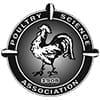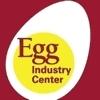Check out what is new in Poultry Industry
Find the best technical articles, forums, and videos on Poultry Industry at Engormix. Enter now and interact with the world's largest agricultural social network.
.mp4&w=3840&q=75)
Dr. Stephen Adejoro (Livestock Industry Foundation for Africa) shares with Engormix members his comments on this usual problem in raw materials and its consequences on vaccination, health and performance....
Comments : 1
Recommendations: 3
.mp4&w=3840&q=75)
Dr. Piotr Stanislawski shares his experience with Engormix members regarding the use of enzymes in poultry diets and gives his advice on how to do it properly....
Comments : 89
Recommendations: 31
.mp4&w=3840&q=75)
Sasha van der Klein (Hendrix Genetics), Noémie Garcia Martinez (Hendrix Genetics), Bethany Baker-Cook (Auburn University) and Kooney Pongmanee (Kasetsart University, Thailand) talk to Sam Shafer (PSA) about research on welfare, behaviour and other modern challenges, as well as collaboration in the scientific community. Let's Squawk About It is a monthly interview segment by the Poultry Science Association....
Comments : 0
Recommendations: 1
A study was conducted to investigate the hypothesis that over-processing (OP) of meat and bone meal (MBM) exacerbates infection with necrotic enteritis in normal and high phytase diets. A total of 768 Ross 308 male chicks were randomly assigned to 8 treatments with 6 replicate floor pens each housing 16 chicks using a 2 × 2 × 2 factorial arrangement of treatments for 42 d. Factors were: NE challenge, no or yes; phytase* level, 500 or 5000 FTU/kg (both using 500 matrix values for...
Comments : 0
Recommendations: 0
A feeding study was conducted to examine the efficacy of a synergistic blend of feed additives on growth performance, livability, gut integrity, immunity, caecal microflora and footpad health in broilers challenged with subclinical necrotic enteritis (NE). Additives were: A) synergistic blend of medium chain fatty acids (MCFA), slow-release C12, target release butyrates, organic acids (OA) and a phenolic compound; B) synergistic blend of partly buffered OA with MCFA; C) synergistic blend of...
Comments : 0
Recommendations: 1
Probiotics are showing promise as antibiotic replacements but more scientific evidence is required to validate their beneficial effects. Previous broiler feed trials conducted with Bacillus amyloliquefaciens strain H57 (H57) indicated variable bird performance (Bajagai, 2018). In these trials, birds were kept under “optimal” experimental conditions, where most of stressors were absent from the environment. There is some evidence that probiotics are best applied when a bird or...
Comments : 0
Recommendations: 0
Introduction The poultry industry has been able to develop high-level technologies in these more than one hundred years of existence, reaching high zootechnical results. These advances have been obtained through a lot of financial investment in ambience, making the handling work more efficient. However, to offset this economic contribution, the producers were taken to increase the population density in aviary, mainly broiler chickens, currently one of the most discussed and...
Comments : 0
Recommendations: 2
.mp4&w=3840&q=75)
Edgar Oviedo-Rondón (North Carolina State University) went over the research presented in different papers on this subject, during IPPE 2022 in Atlanta, USA....
Comments : 0
Recommendations: 0
.mp4&w=3840&q=75)
Thomas Dixon (Hy-Line) discusses the cost and price increase that comes with this change, and how to adapt to it, during the Avicolas and Porcinos event in Buenos Aires, Argentina....
Comments : 1
Recommendations: 0
.mp4&w=3840&q=75)
Peter van Horne (Wageningen Economic Research) mentions the need to discuss more of the issues (costs, environment, price, etc.) that arise with this change in poultry production....
Comments : 0
Recommendations: 1
.mp4&w=3840&q=75)
Mark Allen (Lohmann Breeders) explains the urgency of understanding chicken behavior and talks about other current problems, during the Avicolas and Porcinos event in Buenos Aires, Argentina....
Comments : 0
Recommendations: 3
Northern fowl mites (Ornithonyssus sylviarum) are one of the more common ectoparasites (external parasites) that can be present in a flock. These mites live on their host throughout their life and feed on poultry blood. They are most commonly found around the vent, tail, and breast of the birds. Although these mites prefer poultry as a host,...
Comments : 0
Recommendations: 1
.jpg&w=3840&q=75)

Mycotoxin detection: VICAM builds a stronger and more sustainable future for food
Suggested link
The poultry husbandry landscape in the United States is rapidly evolving in response to public concern related to animal welfare. As the production systems become complex and the flock sizes increase, conventional welfare assessment methods can be inadequate. Technology can help us in that regard by reliably...
Comments : 3
Recommendations: 0
by Sam Shafer
Scientists and producers weigh the feasibility of on-farm carcass disposal in cases of foreign animal disease outbreaks
Biosecurity has always been a priority on farms. Because of the speed with which a poultry disease can spread through a flock, producers and researchers are constantly improving their practices for controlling animal disease outbreaks.
A new study, published recently in the ...
Comments : 0
Recommendations: 0
by Sam Shafer
Yangzhou University scientists examine meat quality from every angle
Duck meat is prized for its delicate flavor and juicy texture, as well as its notable protein content, polyunsaturated fatty acids, vitamins and minerals. In fact, duck meat is rising in popularity, especially in China.
The challenge is to get ducks to market quickly without compromising meat quality. In China, which produces 85...
Comments : 0
Recommendations: 0
...
Comments : 0
Recommendations: 0
...
Comments : 0
Recommendations: 0
...
Comments : 0
Recommendations: 0






.jpg&w=3840&q=75)






























